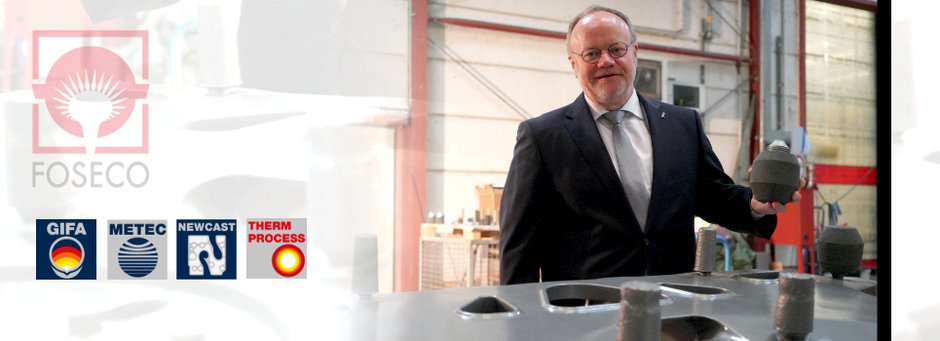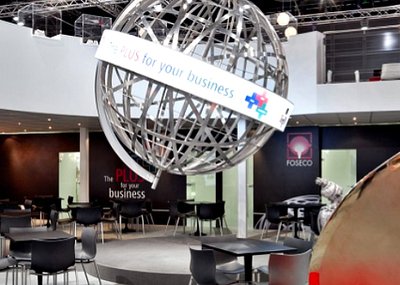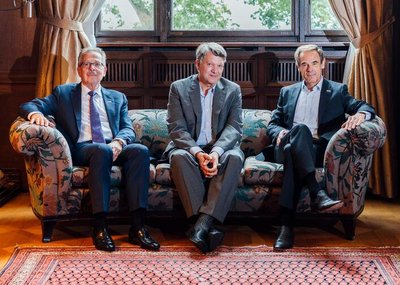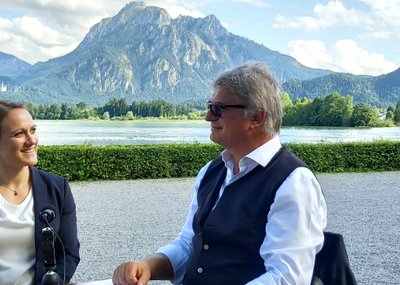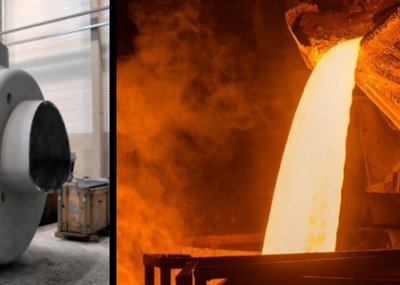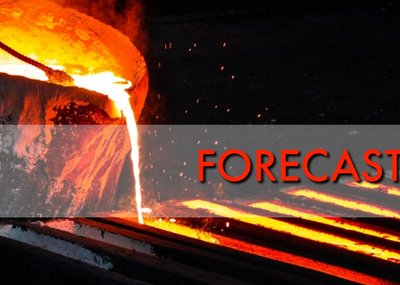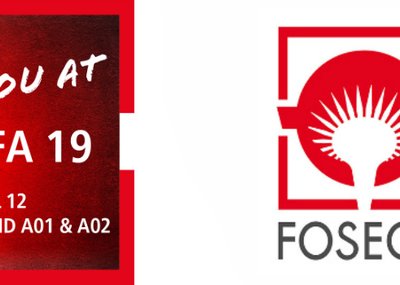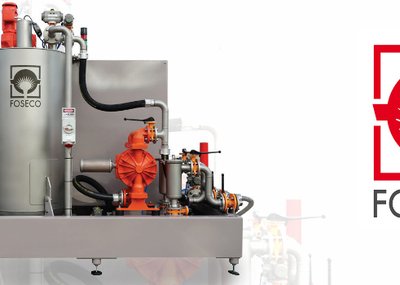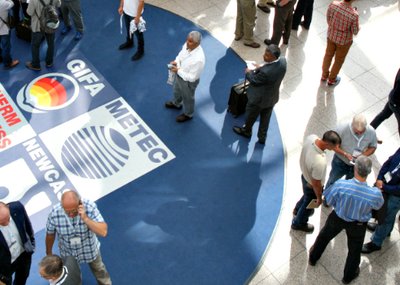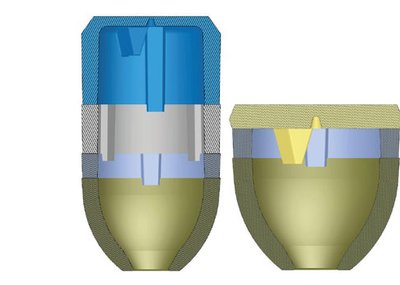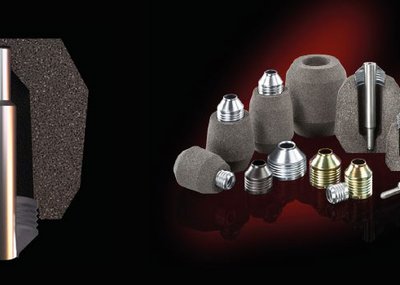Foundry-Planet interview with GIFA and NEWCAST trade fair president Dipl.-Ing. Heinz Nelissen, Managing Director Vesuvius GmbH, Foseco Foundry Division, Borken.
FP: Worldwide forecasts for the foundry industry until 2025 are moderate but positive, yet the industry faces interesting challenges.
Especially in Western Europe and Germany, we had two good years of growth in the iron and steel foundries in 2017 and 2018, and the aluminum foundries are growing rather continuously. The challenges for the foundries are manifold. If we think only of the economic performance of the companies, the competition by other foundries or by the competitors in low-wage countries, but also blacksmiths and editors are classic, well-placed competitors. As far as materials are concerned, iron and aluminum foundries are fighting for the best solutions, and the plastics industry has also defined the global automotive market as the target market. Here we casters must propagate even more our recycling solutions. The increasing lightweight construction, regardless of the material, challenges foundries and suppliers. Environmental regulations must be met and ideally require closed recycling cycles. The next generation of founders needs to be interested and trained to ensure the sustainability of the industry. I am convinced that the foundrymen will accept and master these challenges.
FP: The unclear future of automotive powertrains, the Internet of Things (IoT) and additive manufacturing - these are three key words. What is the world of foundry currently doing most and in which order?
Dividing the automotive industry into passenger cars and commercial vehicles gives a picture. Commercial vehicles, especially for overland traffic, will continue to be equipped with internal combustion engines. Especially here in Europe there are some investments in the production capacity for trucks. In cities, buses, postal and parcel services and cars in city traffic are more likely to drive electrically in order to reduce emissions in the centers. No matter which type of drive, casting products are needed. The foundry must define and find it´s segment and specialize there.
One megatrend is additive manufacturing. The generative processes represent one of the largest fields of research and investment in global industry. In large-scale production, casting processes have so far remained much more cost-effective. Therefore, 3D printers are used in addition for cores, tool inserts, prototypes and spare parts, but also for special aviation parts.
The Internet of Things and digitization enable digital transformation. As a result, significantly more process parameters can be recorded, evaluated and transferred to digital control loops. With automation, much more is possible. At the GIFA you will surely find interesting solutions from the big machine suppliers.
FP: How do you assess the future of iron, steel and non-ferrous cast iron by 2025 and do you see different developments in the big markets like China, India, Europe and North and South America?
Unfortunately, global trade relations are not as stable and resilient as they have been in recent years. In general, different developments in the aluminum foundries and the iron, steel and malleable foundries can be assumed. The aluminum foundries show tonnage growth worldwide, while the iron and steel foundries are growing strongly, mainly in China and India, and otherwise tend to stagnate or shrink slightly. Due to the supply situation for the American automotive market, special growth can only be expected in Mexico.
FP: How do innovative foundries have to set up to meet the challenges?
The foundry industry is generally considered a fairly conservative industry. Nevertheless, some foundries, especially in Germany and Central Europe, succeed again and again in establishing innovative and commercially successful solutions in their foundries.
FP: How do these businesses do that? How do they differ from their competitors?
The innovative caster will work closely with his client to be involved in the client's work right from the development stage. Here he may be able to integrate solutions into the cast construction, which can later only be manufactured by him or at least have advantages for him. In material developments, he tests at an early stage, he proactively adopts process optimization, and brings his own ideas to light construction. Many new castings are being developed as system integration takes place and more attachments are integrated into the casting solution. The innovative caster will be exhibiting at NEWCAST to showcase his innovative solutions to customers, and he will visit the GIFA and presentations at the GIFA Forum in order to keep up to date and to network.
In addition, he will work closely with his supplier and involve him at an early stage in order to work in partnership on an innovative solution.
FP: The valuation of castings is still largely reflected in tonnage volume. How can a change towards the reward of real value creation be achieved? Will foundries soon only offer complete Solutions?
In fact, a foundry is valued essentially according to the sold pouring tonnage. Likewise, the big buyers of castings, the OEMs, are very focused on the price per kg of cast. As a result, the selling prices of foundries in global competition are made comparable and are under constant downward pressure. This is a dangerous trend, particularly in periods of economic downturn, as underutilized companies bring in additional quantities at prices that are sometimes ruinous. It is the task of the foundry to show the value-added advantages and unique selling points, which one might have against the competition, and translate it into a better selling price. For this, the foundry must know its own process and at least the most important competitors well. Fortunately, there are now more and more companies that are starting to convert the income statement to contribution margin per molding box, in order to optimize this parameter.
The OEMs want to incorporate more components and complete solutions and reduce the number of suppliers. This can give foundries the opportunity to invest in machining or pre-assembly and deliver prefabricated components. As a result, additional contribution margin is generated, but high investment costs are necessary.
FP: What contribution to support do global suppliers such as FOSECO make in the material mix or in the area of light metal casting for e-mobility?
Some of the major global suppliers have invested in research and development capacity in recent years. FOSECO has set up the global R & D center for foundry in Enschede in the Netherlands. There, we carry out all development projects with a global reach, local projects are processed in the location-based laboratories.
The current trend towards e-mobility promotes a mix of materials in Aluminum and high-strength, thin-walled steels, for which new applications are possible. In general, lightweight construction continues in the automotive industry and presents the foundry with ever new challenges.
Incidentally, in the area of light metal casting, FOSECO has its own business unit for non-ferrous foundries, our focus is on the melt treatment of cast aluminum and refractory linings for dosing furnaces. Both technologies are in great demand for die casting and e-mobility and are already standard applications for structural components.
Thin-wall casting, also in iron and steel castings, is supported by FOSECO through filtration projects and optimized finishing applications. In the field of cylinder head for trucks, we have developed a coating with a leading European truck manufacturer, which leads to significantly better cleanliness of the oil and coolant channels. This technology will also be presented at the NEWCAST Forum.
In the field of medium-weight steel castings we will introduce Hollotex Shroud, a technology for hitherto impossible turbulence-free casting.
FP: What about the junior engineers for the foundries? Who will have the say in the future: the metallurgist, IT or the executive?
In general, one can say that we are increasingly looking for the next generation of foundrymen in Germany and Europe. BDG and VDG as well as universities and companies have made some efforts to improve the image of the industry and to interest more young people in the foundry industry. At the GMTN again there will be the youth program Metals4you, where young people should be interested in technical professions before choosing a subject to study.
An IT expert will certainly not run a foundry. However, the young engineer of today will increasingly find it easier to deal with the digital tools at his disposal and to master the extensive foundry process. He has a very good metallurgical background and basic commercial skills to successfully complete his demanding job.
FP: How important is a leading international trade fair like the GIFA in Düsseldorf in the digital age?
I would like to argue against it: ESPECIALLY in the digital age, face-to-face communication is invaluable. Of course you can get the most out of the digital channels and get an overview - but the personal impression and the personal conversation with business partners and customers cannot be surpassed and are the alpha and omega in the business world.
FP: What impulses and highlights await you in June and what distinguishes GIFA from regional events all over the world and makes them so attractive?
GIFA is undoubtedly the world's most important trade fair for foundry technology - and has been for 63 years. Together with its sister fair, the NEWCAST, it covers the entire spectrum of foundry technology and cast products in a unique depth and width. Global players and market leaders are represented as well as small, innovative companies. Current megatrends, state-of-the-art technology and the innovations of tomorrow will be presented on an international scale. Trade visitors from business, research, development and teaching cannot obtain such a complete overview of the industry at any other trade fair worldwide. Not to forget: METEC and THERMPROCESS - the leading international trade fairs for metallurgy and thermal process technology - offer real added value.
FP: Please give us three reasons why the GIFA visit in June 2019 is a must for every foundryperson.
1. GIFA, NEWCAST as well as METEC and THERMPROCESS offer a veritable fireworks display at congresses, seminars, specialist events and special shows - for the expected approximately 78,000 visitors from all over the world this is a unique opportunity to enrich the know-how. From this wealth of events, I would particularly like to highlight the special show Additive Manufacturing in Hall 13 and the congress on the same topic.
2. With around 900 exhibitors from all over the world - and that alone at the GIFA - the who's who of the international foundry industry awaits you. Take this opportunity to learn first-hand about the technology of today and tomorrow.
3. The GIFA is the international summit of the foundry industry. Do not miss it!
I strongly encourage you to visit GIFA, METEC, THERMPROCESS and NEWCAST from June 25, 2019 to June 29, 2019 in Dusseldorf. We look forward to seeing you!

